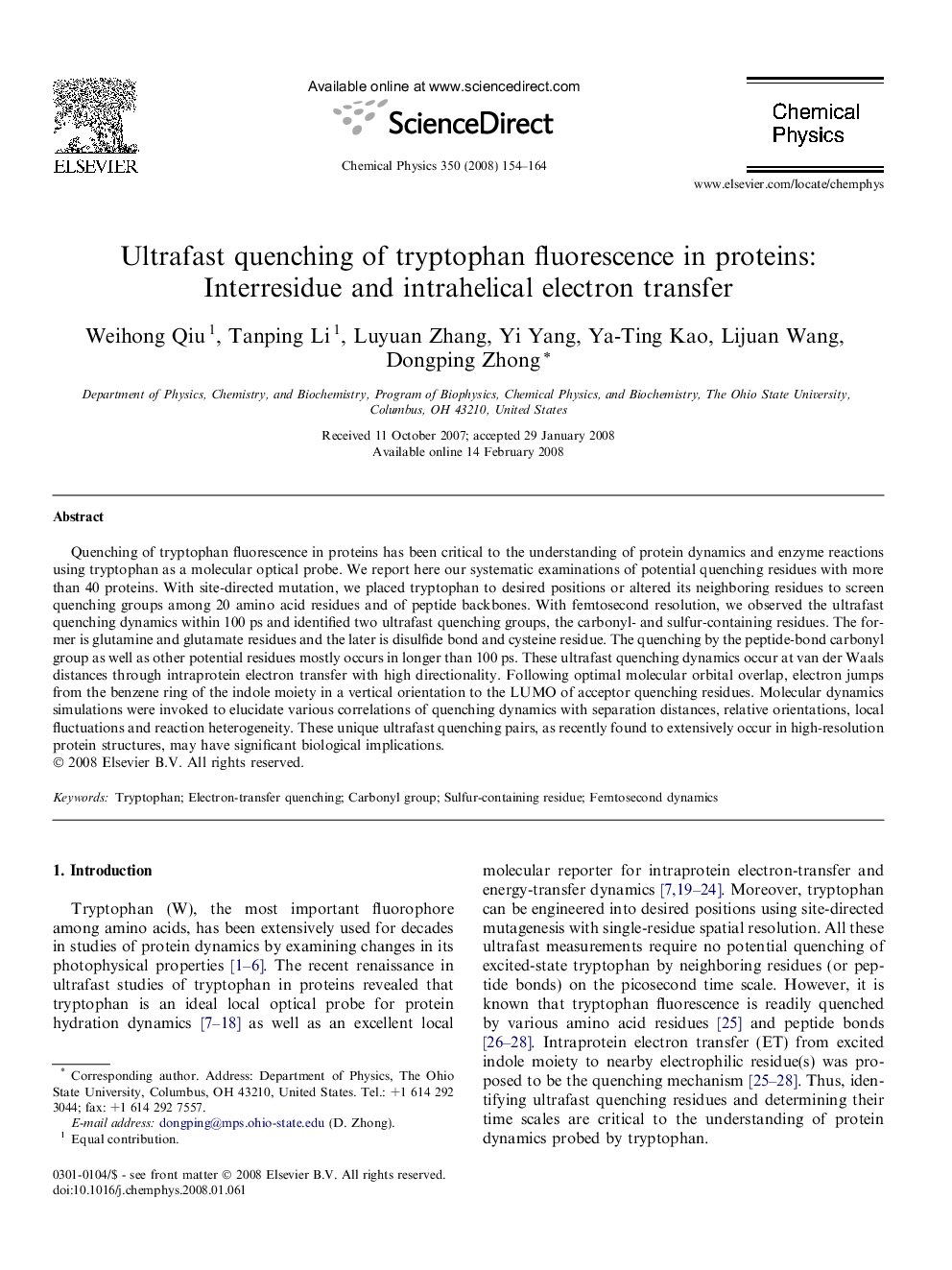| Article ID | Journal | Published Year | Pages | File Type |
|---|---|---|---|---|
| 5375641 | Chemical Physics | 2008 | 11 Pages |
Abstract
Quenching of tryptophan fluorescence in proteins has been critical to the understanding of protein dynamics and enzyme reactions using tryptophan as a molecular optical probe. We report here our systematic examinations of potential quenching residues with more than 40 proteins. With site-directed mutation, we placed tryptophan to desired positions or altered its neighboring residues to screen quenching groups among 20 amino acid residues and of peptide backbones. With femtosecond resolution, we observed the ultrafast quenching dynamics within 100Â ps and identified two ultrafast quenching groups, the carbonyl- and sulfur-containing residues. The former is glutamine and glutamate residues and the later is disulfide bond and cysteine residue. The quenching by the peptide-bond carbonyl group as well as other potential residues mostly occurs in longer than 100Â ps. These ultrafast quenching dynamics occur at van der Waals distances through intraprotein electron transfer with high directionality. Following optimal molecular orbital overlap, electron jumps from the benzene ring of the indole moiety in a vertical orientation to the LUMO of acceptor quenching residues. Molecular dynamics simulations were invoked to elucidate various correlations of quenching dynamics with separation distances, relative orientations, local fluctuations and reaction heterogeneity. These unique ultrafast quenching pairs, as recently found to extensively occur in high-resolution protein structures, may have significant biological implications.
Related Topics
Physical Sciences and Engineering
Chemistry
Physical and Theoretical Chemistry
Authors
Weihong Qiu, Tanping Li, Luyuan Zhang, Yi Yang, Ya-Ting Kao, Lijuan Wang, Dongping Zhong,
